How to Get a Dog to Stop Barking in 5 Steps
- Anja Boecker
- Updated: 2023-09-11
There is nothing more relaxing than taking your dog for a walk. However, that peace can be quickly shattered if your pet barks constantly. It will be even more unpleasant for you and your neighbors if your dog does it at home. Do not despair, with this article you can relax with your pet again.

Why Do Dogs Bark?
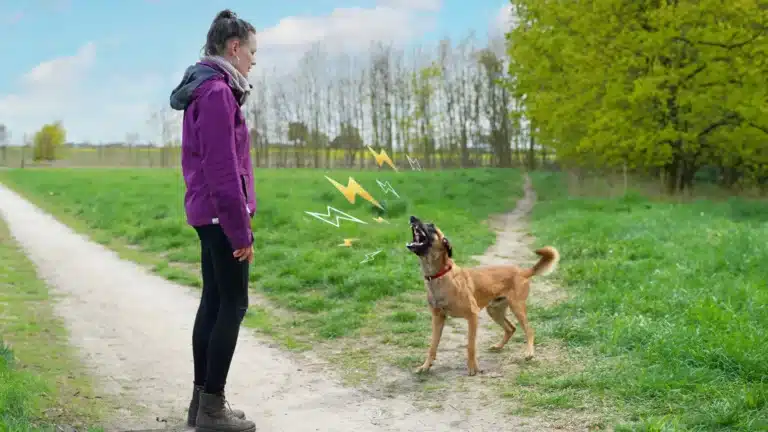
Before you can break the barking habit, you need to know why your dog is barking. Is it fear, excitement, or boredom?
Barking is an important part of communication between dogs. They use it to pass on information. There are many reasons for this.
Sometimes your four-legged friend barks to warn you of danger. Sometimes, however, they just bark on a whim. Dog barking is their language and their way of communicating with each other.
By the way: Your darling also tries to communicate with his fellow human beings with the help of barking.
If you have some experience with your furry friend, getting to the bottom of barking will be easy. But if you've only recently had the pleasure of sharing your life with a dog, you may lack the background knowledge.
But don't worry, it will pass. In a few months, you'll understand your protégé blindly.
To understand and effectively manage your dog's barking, it's important to identify the specific triggers and meanings behind your dog's different barks. This can help you develop appropriate strategies for dealing with barking.
With Puppy
Puppies can bark for many reasons, just like adult dogs. Here are some of the most common reasons your puppy may be barking:
- Communication: Your puppy is trying to communicate something to you or to other dogs. It may be a request to play or a request for attention.
- Fear: Young dogs are discovering the world and everything that is new. An unexpected noise or unfamiliar experience can startle your puppy and cause him to bark.
- Excitement: Puppies are easily excited, especially when they meet new people or animals. This excitement can cause them to bark.
- Pain: If your puppy is in pain, he may bark to alert you.
- Hunger: A hungry puppy may bark to indicate that it is time to eat.
- Response to other sounds: Puppies often react to sounds in their environment, whether it's a ringing phone or traffic noise.
- Seeking attention: Puppies love attention and may bark to get it.
- Boredom: When a puppy is bored and looking for entertainment, it may start to bark.
- Learning process: Puppies learn to use their voices. Barking can be part of this developmental process as they try out different ways to communicate.
To find out why your puppy is barking, observe the circumstances under which he is barking. Watch his body language and environment for clues to the cause of the barking.
Remember that it takes patience and loving parenting to teach your puppy when it is appropriate to bark and when it is not. Use positive reinforcement to reward quiet behavior and help your puppy develop healthy habits.
Causes of Barking
You've already learned that your dog barks to communicate. So when he occasionally barks - especially in the face of danger - it's a natural instinct. It's to communicate, in this case in the form of a warning.
There are many reasons why your furry friend may bark both outdoors and indoors. Unfortunately, your pet may also bark too much or all the time. This disturbs you, your neighbors, or other passersby.
A dog often barks out of boredom. Daily walks, playtime and training will help.
Most of the time, there is a reason behind it that you can easily fix. Therefore, we have compiled the most common causes and reasons here:
- Bad Habit
- Excitement
- Afraid
- Boredom
- Sudden Uneasiness
These four items are the main causes of excessive barking. However, with a little patience, you can eliminate these causes.
1) Bad Habit
Unconscious training can be the cause of frequent barking. In this case, the dog develops a persistent bark to get its way.
The most common reasons for this barking are to ask for a treat or to go for a walk. Your furry friend is using this behavior to gain and maintain dominance in your relationship.
With a little patience, you can break this bad habit. The first step is to find out why your dog is barking. Watch him closely. For example, if he stands in front of the door and barks constantly, you can assume that he needs fresh air.
If there are set times for the walk and your dog barks outside of those times, it's a bad habit that you need to break.
2. Excitement & Stress
You may find that your dog barks excessively or loudly when visitors come or when he is generally stressed. This barking is a little harder to stop. It is a natural instinct and not a bad habit
If your dog is overexcited, you can help him by lowering his adrenaline. Do you have a stressful time coming up (like a visit to the vet) or are you expecting a lot of guests this weekend?
Then, it's best to plan different activities that will make your boyfriend feel extra exhausted and thus get rid of his adrenaline.
3) Fear
If you have an anxious dog, there's a good chance he'll bark excessively. Most of the time, this is due to trauma that may have nothing to do with you. If your pet is frequently barking out of fear, the first thing you should do is find out what is causing it and fix it.
Are there situations where your dog gets anxious? The best thing you can do is use a natural tranquilizer. As a rule, however, this is not a permanent solution. Therefore, it is advisable to quickly find the cause of your dog's fear and fix it.
4) Boredom
If your dog is not challenged in his daily routine, he may bark a lot out of sheer boredom. This is also an instinctive behavior. However, you can quickly eliminate the cause by making sure your pet has enough to do.
You should leave your dog alone as little as possible. Of course, you still need to go about your work and daily life. But make sure your dog has enough to do during that time.
Do you have the financial and physical resources to find a journeyman for your pet? Then you should consider this option. Dogs are not solitary creatures, they usually live in packs. So if your faithful companion spends several hours a day alone in the apartment, this may manifest itself in excessive barking. A companion will quickly remedy this situation.
Don't have the room or the money for a second dog? Then consider the following: Make your time with your darling (best right before and after work) especially active.
5) Sudden Uneasiness
Caution should be exercised in the event of sudden excitement. The initial situation may be as follows:
You already have experience with your dog. The constant barking has never been a problem. Suddenly, from one day to the next, your dog's character has changed. If this sounds familiar, you should visit your veterinarian.
There may be ailments - such as physical causes - that have recently occurred. These may cause barking. The veterinarian can find the cause through a brief examination and prescribe appropriate therapy.
6 Helpful Tips for Barking
- Make sure your dog has enough to do and let him burn off some energy!
- Be with them and encourage them to socialize!
- Always be calm and patient!
- Ignore the barking for a few seconds!
- Hire a dog walker if necessary!
- Apply a bark training!
Other Causes:

To attract attention: If they are bored or want to get your attention, they may start to bark. They may want to play, go for a walk, or just want your company.
Alarm and warning: Dogs often bark to warn their owners of potential threats. This could be a stranger at the door, another animal in the yard, or a noise that has attracted their attention.
With strangers or visitors: Some dogs bark when a stranger enters the house or when they see a stranger on the street.
At play: When playing, a dog may bark to express excitement and joy.
Territorial behavior: Dogs are territorial animals by nature and may bark to defend their territory.
When meeting other dogs: Meeting with other dogs may result in an exchange of barking, whether from play or aggression.
During training: Dogs may also bark during training, especially when they are excited or frustrated.
Night: Some dogs bark at night, possibly in response to sounds they hear or because they feel lonely.
Asleep: Some dogs even bark in their sleep, which can be a sign that they are dreaming.
Communicating with other dogs: Dogs also communicate with each other by barking, whether to play, to mark territory, or to strengthen social bonds.
Pain or discomfort: If a dog is in pain or uncomfortable, it may bark to alert you.
Response to other sounds: Dogs have very sensitive hearing and can respond to sounds that are too quiet for humans. Dogs can respond to a variety of sounds, whether it's a passing car, a ringing telephone, or a doorbell.
Genetic predisposition: Some dog breeds are more prone to barking than others due to their genetic makeup and the purpose for which they were originally bred.
Dog Stop Barking - 5-Step Method
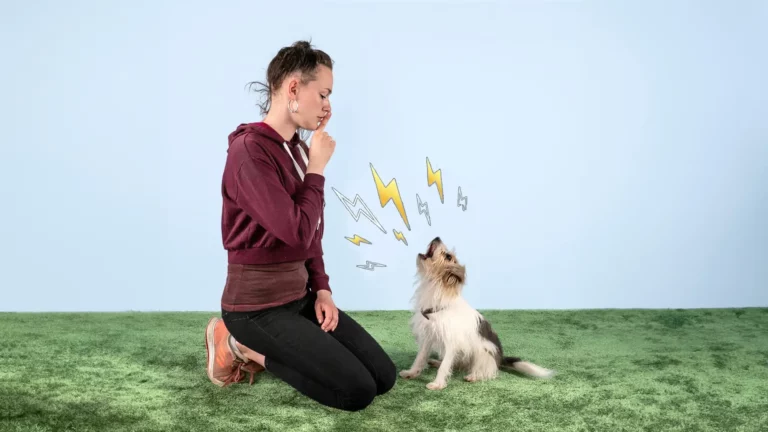
Anti-bark training is a way to control your dog's constant barking. It usually only takes a little practice. Plus, your dog will associate this training with a fun activity.
Here are step-by-step instructions:
1. Select a Command Word
Choose a quiet environment without distractions so your dog can focus on the training. First, choose a word that will signal the command to stop barking. There are no limits to what you can do. However, the command word should be unique and not used for another exercise or command.
2) Assign the Command
After you find out why your dog is barking, provoke that reaction. Let your dog bark and wait for him to stop on his own. When he is quiet, say the word you chose as the command to stop barking in a soothing tone.
3) Use Treats
As soon as your dog stops barking, praise him with words like "Good boy" or "Good dog" and give him a treat. This will teach him that quiet is rewarded.
4) Train Consistently
Repeat the exercise a few times until your dog understands the connection between the command and stopping barking. Once your dog understands the command in a quiet environment, practice it in different situations where he normally barks. Gradually increase the time between the command and the reward so that your dog learns to stay quiet longer. Be consistent in your training and use the command every time your dog barks unintentionally.
5) Find a Professional
If you're still not successful, it's a good idea to consult a dog trainer who can also help you determine the cause of the barking. Be patient, because training can take time, especially if barking is an ingrained behavioral habit of your dog.
It is important to have realistic expectations and give your dog enough time to learn the new command. Every dog is different, and while some dogs learn the command quickly, others may take longer.
Always use positive reinforcement and avoid punishment, which is often counterproductive and can damage the relationship between you and your dog.
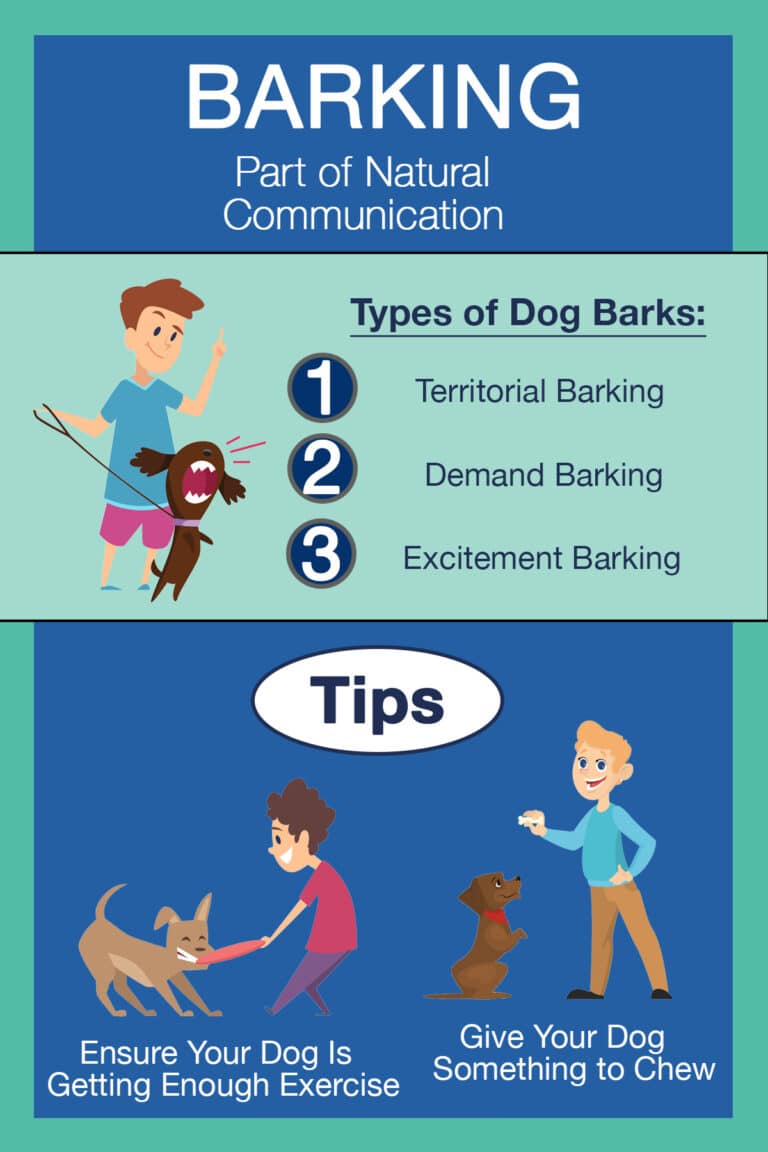
Barking in Different Situations
Dogs can bark in a variety of situations because barking is one of their primary forms of communication.
Each of these situations requires an individualized approach to reducing barking based on an understanding of the specific cause of barking in that context. Here are some typical scenarios in which a dog may bark:
In the Apartment
Barking in the home can have several causes and can be very annoying to you and your neighbors. Here are possible causes and strategies for solving the problem:
What it might mean:
- Reaction to sounds: Your dog may respond to sounds he hears through walls or from outside.
- Fear and uncertainty: In the home, many factors, such as strange smells or noises, can make your dog anxious.
- Boredom and underachievement: If a dog is not challenged enough, it may bark out of boredom.
- Seeking attention: Your dog can learn that barking is a good way to get your attention.
What you can do about it:
Make sure your dog gets enough exercise and mental stimulation to avoid boredom and restlessness. Try to create a quiet environment by minimizing noise sources and darkening windows to reduce visual distractions.
A well-trained dog is less likely to bark indoors. Train him to be calm and socialize him well in different environments and situations.
Reward your dog when he is quiet and ignore unwanted barking so he learns that barking is not a way to get your attention. Provide plenty of toys and activities to keep your dog busy when you're not around.
In some cases, calming tools such as calming sprays or weighted blankets may help reduce your dog's anxiety. If all strategies fail, you may want to seek the help of a professional dog trainer or behaviorist.
When You Come Home
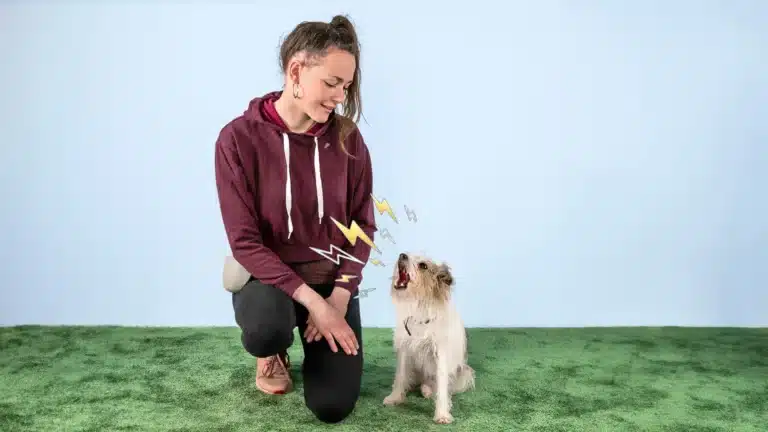
Your dog is happy to see you! It's a natural impulse for a dog to be excited and loud when his owner comes home, but with time and training, you can help him react more calmly. Calm down first, then greet your dog.
What it might mean:
- Excitement: Your dog is happy to see you and can hardly contain his joy.
- Welcoming ritual: For many dogs, barking is part of a greeting ritual to show that they recognize and welcome you.
- Habit: If your dog barks every time you come home, the barking may have become a habit.
What you can do about it:
Try to keep the greeting calm and low-energy so your dog learns that the greeting doesn't have to be an exciting event. If you come home and your dog barks, ignore him completely until he stops barking. Only then should you greet him.
Train your dog to give a quiet welcome command. For example, teach him to go to a certain place and be quiet when you come home.
If your dog stays calm when you get home, remember to reward him. This can include petting, verbal praise, or treats. Be consistent in your training and responses to help your dog learn the desired behavior.
On the Leash
Barking on the leash may indicate territorial behavior or insecurity. Training and socialization may help.
What it might mean:
- Reactive behavior: Your dog may be reacting to other dogs, people, or stimuli in his environment.
- Frustration: The leash prevents him from moving freely, which can lead to frustration.
- Fear and uncertainty: Some dogs feel confined and unsafe on a leash, which can lead to increased barking.
- Protective instinct: Dogs have a natural protective instinct, and barking can be a way to mark territory or defend themselves.
What you can do about it:
Make an effort to socialize your dog so that he is calmer around other people and dogs. Train your dog to behave on a leash.
Use treats and toys to keep your dog's attention on you and away from the stimuli that trigger barking. Reward calm and controlled behavior on the leash to show your dog that this behavior is desired.
Learning calming techniques such as massage can also be helpful. If you know that certain situations or objects trigger your dog's barking, try moving away from those stimuli to avoid barking.
If you are having difficulty solving the problem yourself, it may be helpful to consult a professional dog trainer.
Barking at Other Dogs
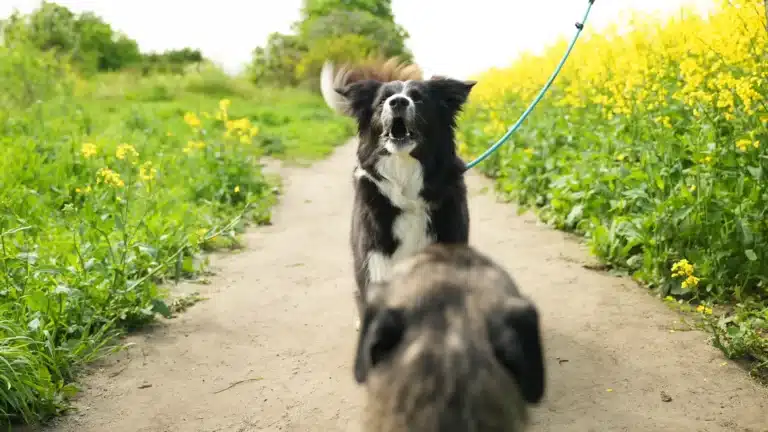
Dogs may bark when they see or hear other animals, especially other dogs. Distraction and training are the key. Keep your dog away from other dogs and work on gradually decreasing the distance.
What it might mean:
- Social interaction: Barking can be a form of communication between dogs to initiate or respond to social interactions.
- Fear: Your dog may bark out of fear or insecurity, especially if he has had bad experiences with other dogs.
- Territorial behavior: Your dog may want to defend his territory and therefore bark at other dogs.
- Excitement: If your dog is particularly excited or overstimulated, he may start to bark.
- Game prompt: In some cases, barking can also be a friendly invitation to play.
What you can do about it:
Encourage early and ongoing socialization with other dogs to improve your dog's social behavior. Train your dog on commands such as "stop" or "quiet" to teach your dog to stop barking on command.
Use positive reinforcement to reward calm behavior and help your dog develop positive associations with the sight of other dogs. Use distraction techniques, such as offering treats or toys, to divert your dog's attention from the other dog.
Conduct initial meetings in a controlled environment to minimize conflict and promote positive experiences.
If your dog is anxious, work on making him more comfortable around other dogs, such as using calming techniques or training to reduce his anxiety.
Until your dog is better trained, avoid situations that can lead to barking conflicts.
Too theoretical for you? If you prefer a visual approach, our app offers step-by-step video instructions to teach your dog to "Meeting other dogs". Learn more about our app here.
When Your Dog Is Alone
This may be a sign of separation anxiety. Train your dog to be alone gradually. It is important to be patient and teach the dog that it is okay to be alone. Separation anxiety is a serious problem that can take time and effort to overcome.
What it might mean:
- Separation anxiety: Your dog may feel anxious and insecure when left alone.
- Boredom: Without entertainment or mental stimulation, a dog can easily become bored and start barking.
- Reaction to sounds: Dogs can react to outside noise, especially when they are alone and feel unsafe.
What you can do about it:
Slowly acclimate your dog to being alone by gradually increasing the amount of time he spends alone. Make sure your dog is physically and mentally occupied before you leave.
Create a safe and comfortable environment for your dog while you are away. Sometimes it can help to turn on a radio or television to mask outside noises that may disturb your dog.
Before you leave, make sure your dog is calm and reward him for it to encourage positive behavior. Consider installing a pet camera to monitor your dog's behavior when he is alone.
If the problem persists, consult a professional dog trainer or veterinarian for specific advice and solutions.
Too theoretical for you? If you prefer a visual approach, our app offers step-by-step video instructions to help you teach your dog to stay alone. Learn more about our app here.
When It Rings
Train your dog to stay calm when the doorbell rings by rewarding him when he doesn't bark.
What it might mean:
- Response to a stimulus: The ringing of the doorbell is a powerful stimulus that can elicit an immediate response.
- Protective instinct: Your dog is trying to warn or protect you by alerting you to a possible intruder.
- Excitement or fear: Ringing can also cause excitement or anxiety, especially if it is associated with a visit from strangers or friends.
What you can do about it:
Train your dog to remain calm when the doorbell rings. You can do this by simulating the ringing while telling him to stay calm, and then rewarding him for his calm behavior.
Try distracting your dog by giving him a toy or treat when the doorbell rings to get his attention away from the door. Introduce a special command that tells your dog to be quiet and practice it regularly.
Create a special area in your home where your dog can go when the doorbell rings to make him feel safe and secure. Help your dog develop a positive association with the doorbell by showing him that good things (like treats or praise) happen when it rings.
When visitors arrive, encourage them to ignore the dog for the first few minutes to minimize anxiety. If the problem persists, a professional dog trainer should be consulted.
Dog Barks Constantly

A dog that barks constantly can be a challenge. To figure out what the constant barking means and how to deal with it, you need to identify the causes and use targeted strategies. Here are some tips that can help:
What it might mean:
- Boredom: Your dog is underemployed and looking for entertainment or attention.
- Anxiety and stress: Your dog may be stressed or afraid of certain noises or situations.
- Response to ambient noise: Dogs have very sensitive hearing and often respond to sounds that humans cannot hear.
- Health Problems: Sometimes constant barking can indicate health problems.
- Territorial behavior: Your dog will be able to defend its territory from perceived intruders.
What you can do about it:
Make sure your dog gets plenty of exercise and mental stimulation every day. Regular training can help your dog respond better to commands. Socialization can help reduce anxiety and aggression.
Reward your dog when he is calm and ignore his barking to show him that barking will not get him the attention he wants. Give your dog a quiet and safe place to go when he is stressed or anxious.
If your dog starts to bark, try to distract him with something else. If you suspect a health problem, consult your veterinarian.
If the problem persists, consider seeking help from a professional dog trainer.
Barking at Sounds
Gradually sensitize your dog to sounds. A comfortable place to sleep often helps.
What it might mean:
- Hypersensitivity to sound: The dog may be particularly sensitive to certain sounds, which often leads to increased stress.
- Fear and uncertainty: At night, uncertainty and fear of the dark or unfamiliar sounds may increase.
- Territorial behavior: Dogs are territorial by nature and may react to sounds they perceive as intruding on their territory.
What you can do about it:
Train your dog to be sensitive to sound by gradually exposing him to different noises. Make sure your dog has a safe and comfortable place to sleep at night where he feels secure.
Maintain a consistent evening routine so your dog knows what to expect and feels more secure at night. Consider calming techniques such as soothing music or a tranquilizer to help him sleep.
Use distraction techniques to take the dog's attention away from the distressing sounds. This can be accomplished by using toys or chews.
If the problem is severe, consider seeking professional help to help you identify the cause of the problem and develop specific strategies to address it.
Asleep
It is important to know that barking during sleep is completely normal and often does not require special treatment. Most dogs have periods of dreaming during which they react similarly to when they are awake. Therefore, occasional barking during sleep is usually nothing to worry about.
What it might mean:
- Dreams: Dogs dream similarly to humans. While dreaming, they can make various sounds, including barking.
- Response to environmental sounds: Dogs may also be sensitive to certain sounds while asleep and bark in response.
What you can do about it:
If your dog seems to be daydreaming, it's best to leave him alone to continue his natural sleep cycle.
If barking occurs frequently during sleep, observe if there are any patterns or if it is related to specific events or environmental sounds. Provide a quiet sleep environment:
Make sure your dog's sleeping environment is quiet and free of distracting noises.
If you're concerned, or if the barking increases during sleep, you should see your veterinarian to rule out health problems or for specific advice.
Encourage a calming ritual before bedtime to help your dog relax and sleep better.
During Game Play
Remember that barking is a natural way for dogs to communicate. Barking during play is normal and, in most cases, not a cause for concern. It's a matter of finding a balance where your dog can express himself without barking excessively.
What it might mean:
- Excitement and joy of play: Dogs can get very excited when playing, and barking may simply be an expression of their joy and excitement.
Demand for - Attention: Your dog may bark to get your attention and encourage you to keep playing with him.
- Frustration: In some cases, barking may be a result of frustration, such as a toy being out of reach or play not going the way he wants.
What you can do about it:
Encourage games that are less exciting and hyperactive to minimize barking. Games such as "fetch" can be a good alternative to wild running and tugging.
If your dog is calm during play, reward him with praise or a treat to encourage this behavior.
Time Limit: Set a time limit to prevent overstimulation and associated barking.
Train the "quiet" command. Introduce a command such as "quiet" or "enough" and train your dog to respond by stopping barking.
Take breaks. If your dog gets too excited and starts barking, take a break and let him calm down before continuing the game. Be consistent in your responses to his barking so that he understands what is expected of him.
During Training
Training should be a positive and rewarding experience for your dog. If barking becomes a problem, it may be a sign that the training needs to be adjusted to create a more comfortable environment for your four-legged friend.
What it might mean:
- Frustration: For example, your dog may be frustrated because he does not understand an exercise or thinks it is too difficult.
- Excitement: Increased excitement can lead to increased barking during training, especially if there are treats or other rewards.
- Attention: Your dog may try to get your attention, especially if he thinks he will get treats or praise in return.
- Malaise: If your dog is uncomfortable or in pain, he may bark to signal his discomfort.
What you can do about it:
Make sure the training environment is quiet and free of distractions so your dog can concentrate. Use simple, clear commands and keep each training session short to avoid frustration and overstimulation.
Reward your dog when he is calm and attentive to encourage this behavior. Keep training sessions short and gentle to avoid overstimulation and frustration.
Make sure you are using the correct technique and be patient as your dog learns. If barking is a persistent problem during training, it may be wise to consult a professional dog trainer.
Genetic Predisposition
It is important to note that not all dogs of a particular breed necessarily bark a lot; there are always individual differences.
However, there are some breeds that tend to bark more often due to their historical role and breeding history. Here are some of them:
Beagle
Originally bred as hunting dogs, they tend to bark and howl loudly, especially when they pick up an interesting scent.
Fox Terrier
This breed is known for its lively and energetic nature and tends to bark when excited or as a warning.
Chihuahua
Small but mighty, Chihuahuas are known for their frequent barking, often to warn their owners of perceived threats. Miniature Schnauzer: Known for their strong guarding instincts, this breed tends to bark a lot to alert their family.
Dachshund
Also known as dachshunds, these dogs bark when they are excited or frightened, which is common as they are a very nervous breed.
Shetland Sheepdog
This breed is very intelligent and alert, which can cause them to bark a lot, especially if they notice something unusual.
Pomeranian
This small but feisty breed can be very territorial, often resulting in heavy barking, especially when it feels threatened.
Yorkshire Terrier
Yorkies tend to be bold and confident, which often leads to a lot of barking, especially when they see other dogs or people.
It's always a good idea to consider the dog's individual preferences and understand that training and socialization can play a critical role in controlling unwanted barking, regardless of the dog's breed.
Frequently Asked Questions
Barking is an important part of communication between dogs. They use it to convey information. However, if the dog is stressed, anxious, bored, or poorly trained, this can lead to excessive barking.
Your dog is not allowed to bark at all between 10 p.m. and 6 a.m. If your dog barks for more than 10 minutes without a break, it is considered a disturbance and your neighbors can take legal action against you.
To stop your dog from barking, you should try to praise him every time you successfully stop him from barking. You can read more about how to do this in our article.
Conclusion
An overly barking dog can be a challenge, but with patience, understanding and consistent training, you can help your dog become calmer and more balanced.
Every dog is different - what works for one dog may not work for another. Find out what works best for your dog and enjoy the quiet moments together.
Have you taken our tips and tricks to heart? Then you can be sure that your dog's constant and annoying barking will soon be a thing of the past.
Please be sure to use the various tips and measures with patience and calmness.
If possible, remove or avoid things that cause your dog to bark.
Do not punish: Scolding or punishing can often make barking worse by increasing your dog's stress. Aggressive behavior on your part is not only counterproductive, but also creates an emotional distance between the two of you.
This makes it more difficult to reach your dog and the tips cannot be properly implemented.
If your pet suddenly starts barking, you should see a veterinarian immediately.
Too theoretical for you? If you prefer a visual approach, our app offers step-by-step video instructions to teach your dog to "Control extreme barking". Learn more about our app here.

My name is Anja Boecker, and I am a certified dog trainer and behavior consultant. With these articles, I want to help you to understand your dog better and to build an inseparable bond.
Share Now:


This article is very helpful and informative. Many dog owners should read it.
However, it does not help if you have a terriorial dog that barks at any movement even outside the fence....
Dear Ingrid, if you have a pronounced territorial behavior, one-on-one training would be more helpful.
We have 10 M old 40cm
big street dog from TS Romania now for 3 days. She is housed in a separate room. Very scared, hand shy, therefore hand fed, and since yesterday morning very barky and growly. We have 1 stock female (Leonberger 9 yrs). The two are still separated now, because TSH does not let himself put on a fuse yet. To sweeten the getting to know each other I have been handing out pieces of sausage. TSH growls and barks, our dog turns away and leaves. They can see and smell each other - separation by door bars. BestH is not really interested. Walking together is not possible for the time being. We had 2 dogs until 1 year ago. Bringing them together was not an issue 9 years ago. How do we befriend the two?
Hello Manu, it is best to take your time and have a lot of patience, because you cannot expect a street dog with a certainly quite dark past to get used to her new living conditions overnight. In such exceptional cases it is always useful to ask a local person for support, such as a trainer or behavior therapist.
Hello Manu
Leo is a German Shepherd /Labrador mix and is constantly barked at by very small dogs.
He immediately reacts with barking
and then jumps jerkily in the direction of the dog. (Results twisted knee)
What can I do to break him of this habit.
Dear Sabine, It is understandable that Leo reacts to barking from other dogs, but it is important to control his behavior to avoid further injury.
One possibility would be to train him with a positive effect. Reward him with a treat or praise when he sometimes does not react and remains calm. This helps him to associate the calm behavior with positive experiences.
Try to get him used to small dogs slowly. If you don't know anyone who has a small dog that you can train this with, you can check with a training school. Start by interacting with a well-behaved small dog to get Leo used to the fact that small dogs are not always a threat.
It may also help to teach Leo to listen better for certain commands like "sit" or "down" when he encounters small dogs.
However, these methods require time and patience. Professional support on site would also be very helpful.
Hello dear Hundeo team,
I think my two TS mongrels bark out of sheer joy every time they go for a walk.
It starts as soon as I put on my shoes, coat, etc. and is annoying.
The dog trainer was unsuccessful despite ten training sessions.
What can I do?
Thank you and best regards from Meerbusch
Birgit
Hello Birgit,
We are sure you will understand that it is difficult to give advice as an outsider when not all the facts are known. However, we hope that the following tips will help you:
1. Ignore the barkingTry to ignore the barking. Wait until your dogs have calmed down before you take them for a walk. Over time, they will learn that barking is not the key to starting the walk.
2. Train the "quiet" commandTeach your dogs a special command such as "quiet" or "still". Use this command when they start barking and reward them when they are quiet.
3. Practise getting dressedSit down and put on your shoes and coat without actually going outside. Reward your dogs when they remain calm. This helps to create a link between getting dressed and staying calm.
4. Change the routineSometimes a change in routine can help reduce excessive barking. Try different routines to see if there is one that causes less excitement.
Patience and continuity are important. It may take some time for your dogs to learn the desired behavior. If the problems persist, it may be helpful to consult another professional dog trainer who specializes in behavior problems.